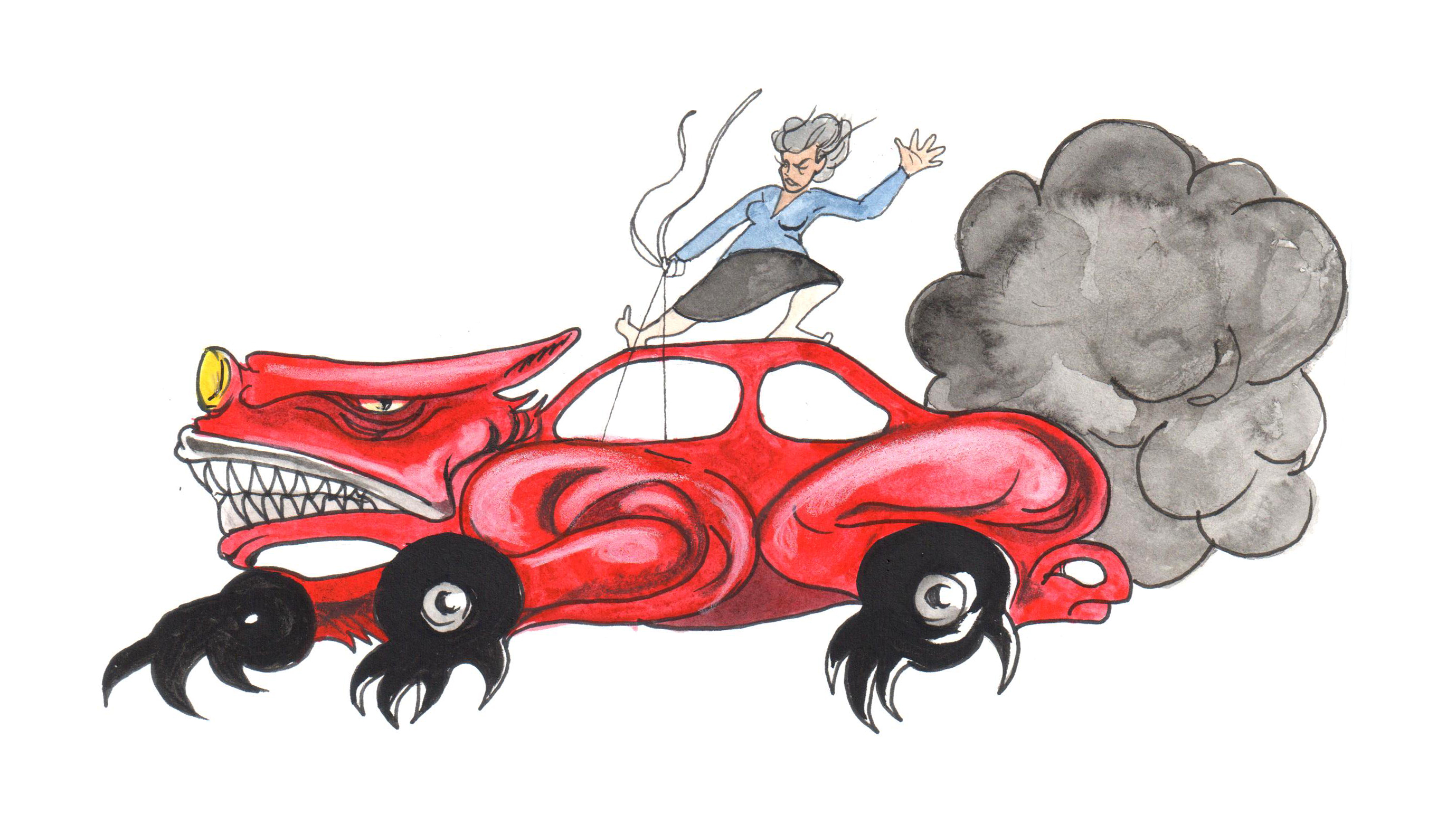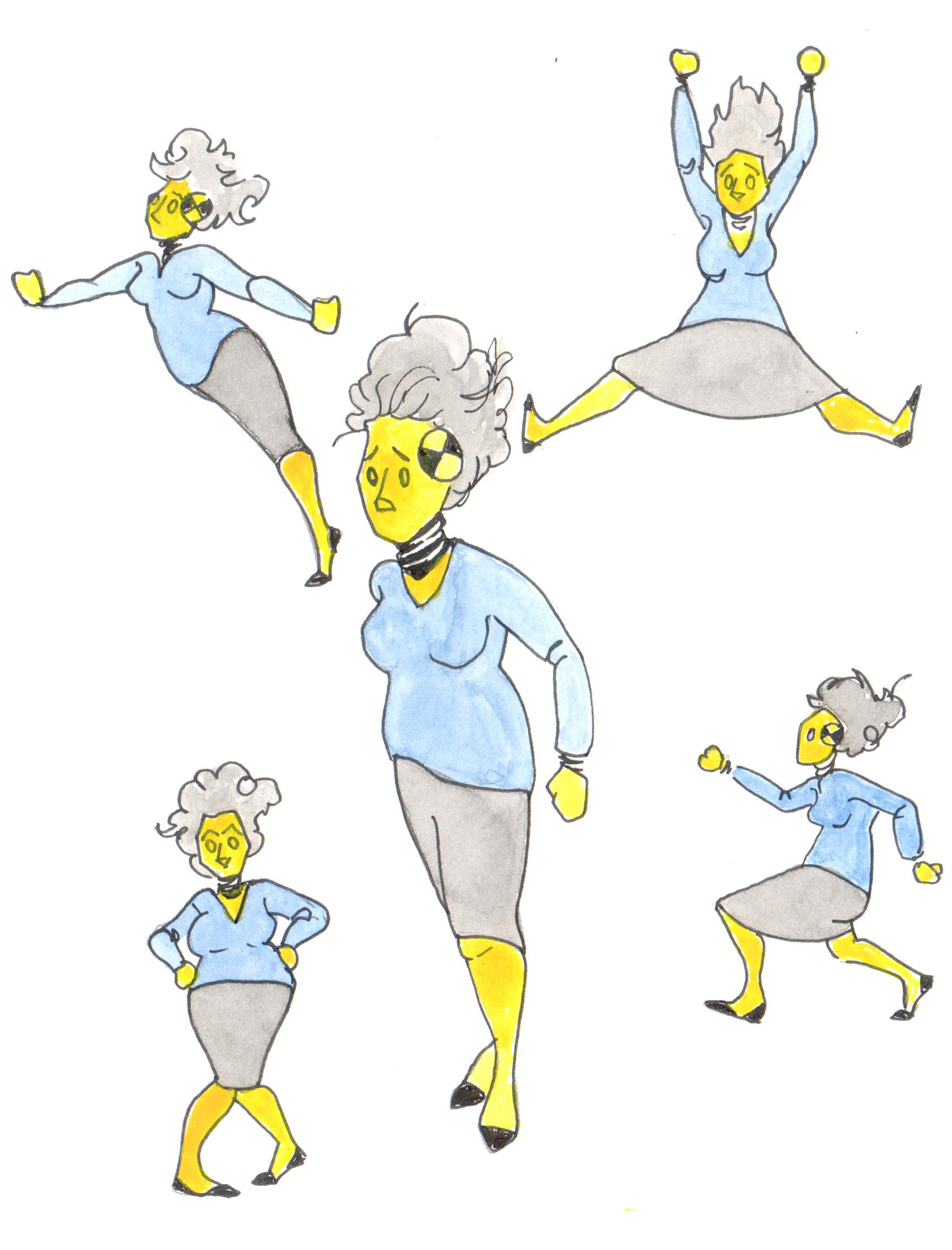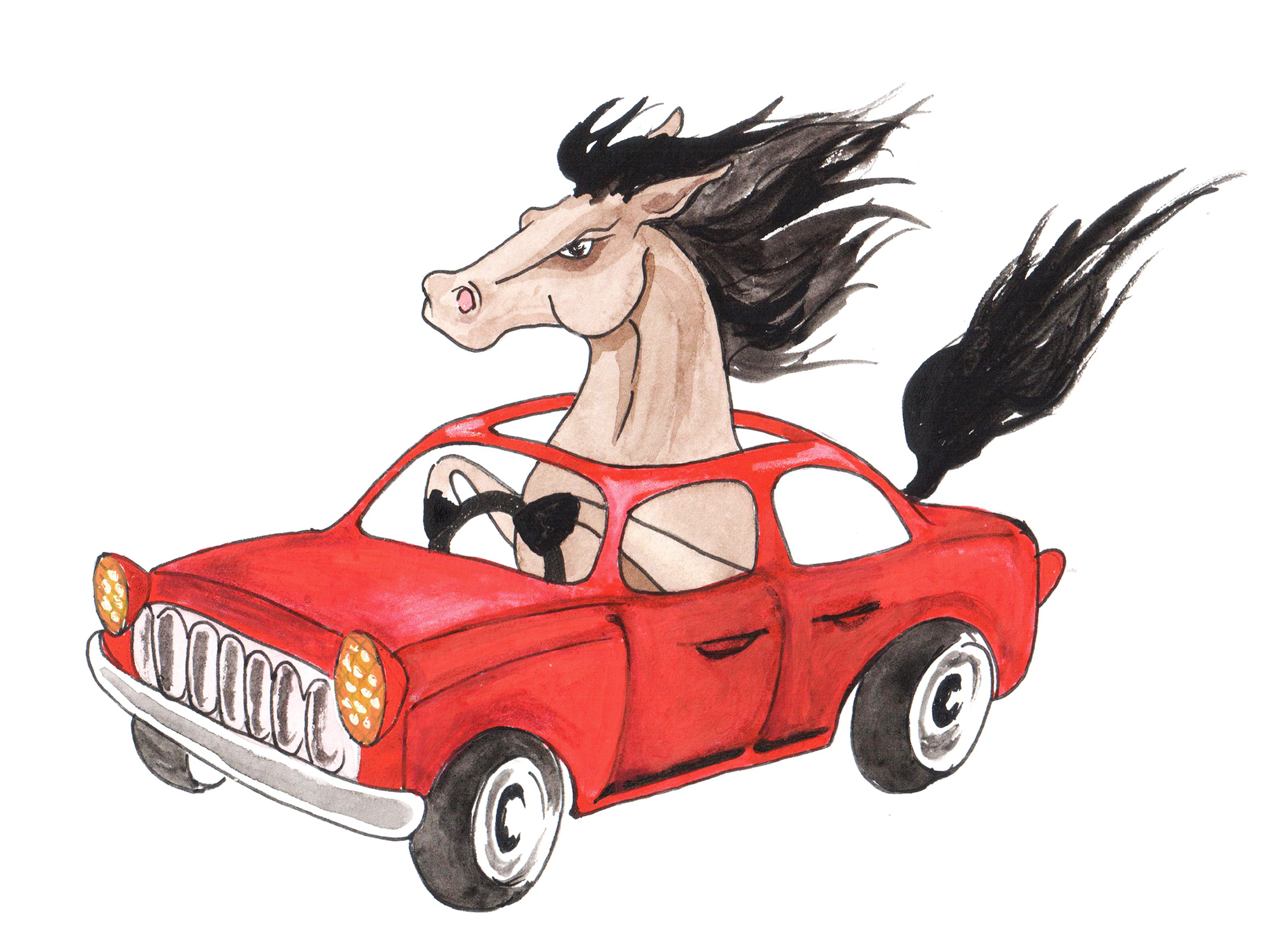“You have to get in the driver’s seat,” my driving instructor Vincent tells me as we walk up to the grey little sedan with two steering wheels. I nod and smile but a part of me is planning to simply turn tail and run away. I feel like I’m about to climb onto a horse as likely to buck me off as gallop evenly along the road.
I never thought I would learn to drive but now it’s really happening, and the process has split me in two. Body and mind.
The two parts are very different in how they deal with things. Mind reasons, plans and analyzes. Body is not logical at all, but like an obedient pack animal it can be taught to respond to demands and signals made by the brain.
“You can do this. You can figure it out. Even stoned teenagers can do it,” I tell myself. “Nothing is going to happen, just get in the car and stop being stupid!” But my legs stop moving. I can feel brain’s fury as body balks. What brain and body share is embedded fear and a sense of inadequacy rooted deeply in the past. Feelings that both motivate and threaten to upend the entire process of learning how to operate an automobile as a middle-aged woman.
Patiently, methodically, Vincent and I go over all the controls, how to turn the wipers on and off, what each gauge is for, how to shift gears, how to adjust your mirrors, and the all-important shoulder check. The car has two sets of controls just in case a student driver loses her mind and turns into oncoming traffic. It’s a strange sensation sitting on the left-hand side of the car. I feel a little like an imposter, or perhaps a horse, trying to figure out how to do the thing its rider wants.
Having watched other people start a car thousands of times over, it feels odd to do it myself. I turn the key in the ignition, put the car in drive, and pull out of the parking lot into the city streets. I feel like yelling out the window: “BEWARE, PEOPLE OF VANCOUVER!”
Vincent says, “The best way to steer a straight course is to look far in front of you.” I grip the wheel and stare ahead, trying to stay in the middle of the road and clear of the parked cars on either side. But there are so many things to pay attention to — street signs, other cars, pedestrians and even a damn squirrel that decides that today is the day to tempt fate.
“There’s a squirrel!” I say as we roll around the corner.
“Just keep going,” says Vincent. The squirrel freezes in the middle of the road as we roll toward it, decides life is worth living after all and darts away. The little creature’s narrow escape reminds me of what a menace cars pose to every living thing in so many different ways.

As I was thinking about the process of learning to drive, I immersed myself in the formidable literature that is anti-automobile. I have made a small study of the evil with which I am becoming complicit.
Like a prophet foretelling the great reckoning to come, the journalist George Monbiot declared the auto industry to be one of the most destructive on the planet, contributing to urban blight and environmental devastation not to mention the endless murder of innocent squirrels.
“I’m struck by the amazing variety of ways in which cars have ruined our lives,” Monbiot writes in the Guardian. “Yes, the car is still useful — for a few people it’s essential. It would make a good servant. But it has become our master, and it spoils everything it touches.”

He’s not wrong. We’ve fashioned our entire culture and built landscape around cars. Vancouver is one of the few North American cities to have been spared a massive freeway obliterating some neighbourhoods, bisecting others, and inevitably jammed with traffic. Jane Jacobs tried to warn us back in the early ‘60s when she set about saving Greenwich Village from the automotive assault by the modernist mega-planner of New York’s boroughs, Robert Moses.
Monbiot reminds that the ways in which cars harm quality of life extend beyond pollution and noise. The stress of driving can tap murky places in the human brain, replacing empathy with exasperation and even rage. “When you drive, society becomes an obstacle. Pedestrians, bicycles, traffic calming, speed limits, the law: all become a nuisance to be wished away. The more you drive, the more bloody-minded and individualistic you become.”
I may be guilty of that way of thinking. When people have asked why after getting along without driving for decades I have made it a top priority to earn my licence, I have said: “Because I want to be a different person.” Monbiot likely would find that reply soft, squishy and self-serving. It’s exactly this willingness to let automobiles define our identities, to stand for and dominate our wants and desires, that must be overcome.
At the same moment, we seem fine with letting tech nerds design away the driver’s emotional relationship with driving, the hands-on feeling of being in charge that is the stuff of popular culture and road racing spectacle. Soon enough, we are told, self-driving cars will ferry us around while we ride, as I have done all my life, as trusting passengers.
I’m not sure that’s such a good idea. I worry that automation will eventually erase all the basic skill sets humans have possessed and used to build their civilizations. When driving goes the way of the Dodo Bird, might other basic building blocks of human knowledge soon follow? This is the worry that Jacobs, the great defender of people-scaled communities, explored brilliantly in her book Dark Age Ahead. “A society must be self-aware. Any culture that jettisons the values that have given it competence, adaptability and identity becomes weak and hollow.”
The other day someone asked if I was planning on buying a car when I got my licence. The idea hadn’t even occurred to me. Mostly because owning, insuring, and fueling a car costs money, which I don’t have. If I do manage to pass my road test and actually get a licence I don’t know how much actual driving I’ll do. Most of my trips around the city are short and along walking, biking and transit routes I know well. The deeper I dive into Monbiot and Jacobs and other tellers of the dark side of the automobile, the less enthusiastic I become about driving as a way of life.
But being able to drive, that is another matter entirely, and learning how to do it has been a revelation. It has reminded me how much daily life is spent not really paying attention, doing things instead by rote. And that when you’re in the process of learning something new and possibly dangerous, body and mind come together and listen closely to each other.

Dancers call this process “putting it in your body.” Knowledge taken up through arms, legs and spine becomes innate, not separate from your mind exactly, but not dependent on it either. The result is muscle memory. I have none behind a wheel. Everything feels acutely self-conscious and awkward. I can watch the instructor do a hand-over-hand as he turns a corner, the steering wheel sliding smoothly against his palm, but I can’t match his ease and fluidity. I might as well have hoofs instead of hands.

Vincent and I tootle around the same five city blocks for an hour, and things begin to make a bit more sense. So much of driving is simply paying attention. It is also surprisingly delicate. Pressing on the gas pedal is like stepping on a baby bird. There is also a physical grace and economy of movement that is almost akin to dance.
When I think about how precise and small the movements are to make the car speed up and slow down, I remember with a shock the clumsy, accidental act of jamming my foot on the gas pedal as hard as I could that cold night in the Kootenays when I was 16. It’s little wonder the car flew through the air and wiped out three power poles. The car was crushed, and so was something inside me that is just now stirring back to life.
I recall, with new admiration, the time my then-husband was at the wheel as we drove through a monumental thunderstorm in Manning Park. When lightning struck close by, whiting out the entire landscape like a flashbulb, he screamed like a 10-year-old girl. I never heard a higher sound in my life. At the time I thought it was hilarious, and in hindsight it’s still pretty funny. The thing is, his muscles remembered, and that kept us on the road, safe and unharmed.
As we curve around corners in East Vancouver, gently slowing at each stop sign and then nudging out into the flow of traffic, a pattern begins to emerge. Like learning to draw or ride a horse, practice eventually becomes a source of pleasure. After a while, you don’t even notice the effort, you simply let it flow.
I’m doing it. I’m driving down the middle of Victoria Drive on a busy Friday afternoon, surrounded on all sides by other drivers. It’s terrifying and exhilarating at the same time. For a moment, I feel vaguely guilty. They are so unsuspecting that an imposter is in their midst.
We turn back into the parking lot, click off the key in the ignition, and it’s over. “You did well!” says Vincent. I know he’s being kind, but I’ll take it.

Last in this series: Dorothy takes the wheel from her twin sister. Find the whole series here. ![]()

















Tyee Commenting Guidelines
Comments that violate guidelines risk being deleted, and violations may result in a temporary or permanent user ban. Maintain the spirit of good conversation to stay in the discussion.
*Please note The Tyee is not a forum for spreading misinformation about COVID-19, denying its existence or minimizing its risk to public health.
Do:
Do not: